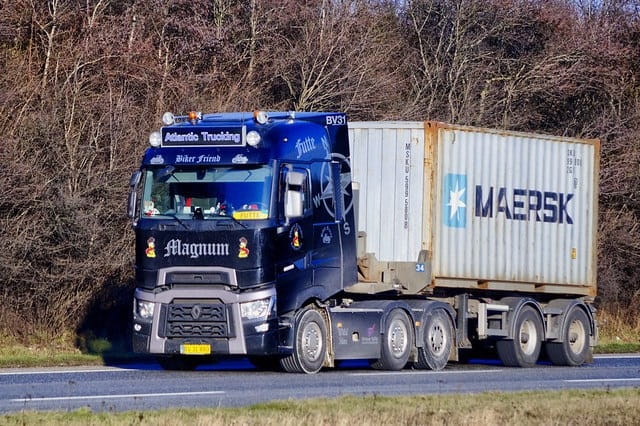About 200 cargo transport companies will meet in Mexico at the first Transport and Logistics Expo
Roughly 200 cargo transport companies from North America, Asia, and Europe will gather in the Mexican city of Guadalajara for the first Transport and Logistics Expo, a great event.

Some 200 companies from the cargo transportation sector in North America, Asia, and Europe will meet in the Mexican city of Guadalajara at the first Transport and Logistics Expo, a great event that seeks to connect suppliers and buyers in this sector to close business deals. The exhibition is organized by the German state company Deutsche Messe and will be held annually in Guadalajara (western Mexico).
The 2020 edition, which will take place from 18th to 20th November, is expected to be attended by 8,000 professionals, announced this Thursday at a press conference by Bernd Rohde, general director of Hannover Fairs Mexico, subsidiary in the country of Deutsche Messe.
This meeting seeks to bring together 16,000 square meters of the exhibition to suppliers of products and services related to freight, passenger, and logistics to establish business relationships with thousands of buyers from the Lower, Western, and the Mexican highlands.
"Land and cargo transportation in Mexico has been and will continue to be of enormous importance, we have more than 13 agreements signed with more than 50 countries and we see in intelligent logistics and long-range transportation an enormous development," he said.
"We see that there is a need to establish an event that reflects all these trends that we have," he added.
Rohde said they seek to enhance this sector that moves 550 million tons by land each year and brings to Mexican territory solutions, projects, and international leading companies.
"Mexico has greatness so that we do not have to go abroad to meet the latest products but these come to Mexico to present in the local market. We want to present tomorrow's solutions and also training," he explained.
Exhibitors will focus on various branches of transport such as producers and services of buses, trucks, chassis and engines, containers, dry and refrigerated boxes, trailers, commercial and special vehicles, fleets, logistics, maintenance services, and spare parts, among others.
The program of activities also includes specialized conferences for managers and entrepreneurs on innovation and technology, as well as an educational program for the general public.
There will also be a pavilion dedicated to the advances and trends in the application of sustainable and renewable energies in the sector.
The initiative responds to a strategy of economic linkage with Mexico, especially with the western state of Jalisco to strengthen and promote the transport sector but also fishing and agriculture shortly.
Rohde explained that they chose Guadalajara for being one of the cities with easier access and greater connectivity with the Bajio region and the highlands of Mexico, which in recent years has had "greater dynamics and growth" by the arrival of automotive and transport companies.
Only in Jalisco the transport sector generates 82,000 jobs and activities related to this sector affect 10% of the gross domestic product (GDP) of the entity, explained at the press conference Alejandro Guzman, representative of the government of Jalisco.
The official said that the presence of this exhibition encourages the attraction of investment not only in the transport sector but also in tourism and other business.
Modes and means of cargo transport
There are various alternatives, modes, and means, of transport for companies wishing to import or export. The modes of transport can be air, sea, land, and rail. The means, on the other hand, refer to the vehicles necessary for the transport according to the mode chosen (air, ship, truck, and rail). Also, there is another transport alternative known as Multimodal.
1. Maritime transport
This mode of transport has the lowest costs of the International Physical Distribution (IPD), given its ability to mobilize high volume, low-value goods and its ability to travel long distances. One of the weak points is its slowness, so insurance must be adequate because of time, distance, and limited frequencies.
1.1. Shipping under charter
Chartering deals with the traffic of large volumes of goods such as solid bulks (cereals, minerals...), liquid bulks (oil...), industrial products that are transported in a large number of units (such as cars or complete manufacturing plants).
The most common ship operating contracts are bareboat charter, voyage charter, and time charter. The contract is made in a document called a "charter policy", P/F or charter party. In a charter party policy, the charterer and the charterer agree, among other things, on the time of laytime, which is the time the vessel must remain in port for loading and unloading operations.
1.2. Liner shipping
The regular line is suitable for general cargo and containerized traffic, which is usually goods of higher value than those seen in the previous section (on a charter basis) such as industrial products and consumer goods.
The main advantage of the regular line is to offer frequent stopovers, maintain stable rates, and guarantee the duration of the service in the long term.
When contracting maritime transport, it is necessary to know which operations and expenses are included in the charter. The liner terms are the conditions, established by the line, in which the liner takes charge of the goods for transportation.
2. Air transport
Air transport is ideal for transporting general cargo and perishable goods although it has restrictions for some products. Because of its speed, insurance costs are lower and the cargo is more secure. However, the shipping capacity is more limited by the space available on the ships.
Generally, previous products, chemical and pharmaceutical products, electronics and telecommunications, live animals, and fragile products are transported.
Two types of service are presented here. The regular service generates rates for general cargo and preferential rates, with which you can pay in the form of prepaid, reverse charge, payment on delivery. The leased service is used for intense cargo flows.
3. Ground transportation
Land transport is the only means of transport capable of performing a "door-to-door" service by itself, i.e. it can pick up the goods at the exporter's factory and deliver them directly to the importer. Quotations or rates are governed by the free market. The reference point is considered to be mainly the volume and then the weight.
There are several types of vehicles for land freight transport. There are trucks for small cargo that are of 2 axles, special to transport up to 16 tons, tract trucks that are used to transport bulk cargo such as cereals. For cargo that requires low temperature, there are refrigerated trucks and tankers for transporting milk, water, and other liquid cargo. There are also multi-level trucks for transporting vehicles of different dimensions.
4. Rail transport
It is a very used transport at the world level because its infrastructure is assured for tracks and vehicles. It offers different types of rail freight cars in vans, gondolas, hoppers, trailers, tanks, duplex, and triplex cars. The vans are hired to transport products that require protection against the environment, with shock absorbers to transport fragile cargo, sensitive to vibration and sudden movements, without temperature control.
There are vehicles for perishable products, with temperature conditions and control; the gondolas transport materials that do not require protection against the environment. Rail-driven trailers on flatcars reduce transport costs over long distances; hoppers are used to transport industrial products that do not require protection against the environment, such as coal. The bulk carriers, transport agro-industrial products that require protection against the environment, the same as cement plants; the tank cars, are closed, airtight, are used to transport liquids or gases such as gasoline, hydrogen, or liquid oxygen; the platforms are used to transport general cargo or heavy load.
5. Multimodal Transport
Multimodal transport is that in which it is necessary to use more than one means of transport to transport the goods from their place of origin to their final destination, but with only one transport contract. This mode is used to carry out more quickly and efficiently the operations of transshipment of materials and goods (including containers, pallets, or similar items used for cargo consolidation)
The choice of mode and means of transport to export or import a product will depend on factors such as the nature of the product in question (perishability, chemical characteristics, fragility, hazardousness, etc.), weight, volume, price, point of departure, or origin and point of destination, cargo consolidation, packaging, packing, routes, freight, among others. Another factor to take into account is the economic resources that the company has.
In the case of exports, the client's requirements must be considered, who will evaluate the frequency, speed, availability, and accessibility in the different modes of transport.




